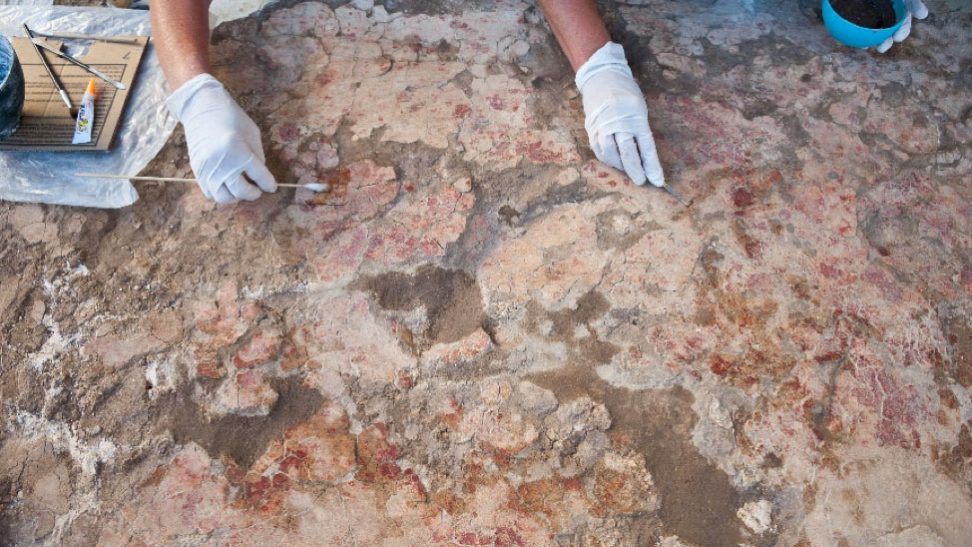
Origins of agriculture and livestock in the Middle East: Mobility, Food and Population in Syria (Tell Halula-Chagar Bazaar) and in Iraqi Kurdistan (Lashkir-Banahilk)
The current project constitutes the continuation of a research work with a tradition of more than 30 years of excavation and archaeological study of Neolithic sites in the Near East. To contribute to the knowledge of the origin of agricultural and livestock societies, in one of the world’s enclaves where the socio-economic, cultural and social transformation that means the passage from hunter-gatherers to agricultural and livestock farmers is taking place with greater antiquity, in contact with the European continent and with a process of its own transformation in a continuous way.

Period
Mesolithic (10.000-9200 cal BC): Gali Chnar (Soran, Iraq).
Pre-Ceramic
Neolithic (9200-7000 cal BC): Tell Halula, Umm el Tlel, (Syria) Akarçay Tepe (Turkey) and the Great Zab Valley (Iraq).
Recent Neolithic/Ceramic (7000-5500 cal BC): Banahilk and Logardan (Iraq) and Chagar Bazar (Syria).
Chalcolithic and Bronze Age (5500-2500 cal BC): Gird Laskhir (Iraq).
Institution
Department of Prehistory. Universitat Autònoma de Barcelona
Web and social networks
http://grupsderecerca.uab.cat/sappo/es
https://twitter.com/Sappo_UAB
https://instagram.com/sappo_uab?igshid=1dlu4e5hgb2ah
https://www.facebook.com/Seminari-dArqueologia-Prehist%C3%B2rica-del-Pr%C3%B2xim-Orient-SAPPO-50686696599
Principal Investigator(s)
Dr. Miquel Molist Montaña
Universitat Autònoma de Barcelona
Ubicación
Iraqi Kurdistan (Lashkir-Banahilk)
LOCATION
RESULTS
The main results of the project are focused on the characterization of the communities in the process of hierarchization in Northern Mesopotamia. In relation to the archaeological interventions in Iraqi Kurdistan, the research is fully consolidated. The results of the field excavations, since 2015, in Gird Laskhir and Banahilk together with an active prospecting program are contributing decisively to the updating of the research in Northern Iraq and indirectly to the characterization of the population in relation to the aspects of food and mobility of these groups. In relation to the multidisciplinary research on the origins of agriculture and livestock, the team and the project continues with excellent research focused on the development of archaeometric analysis of materials and/or data from the ancient excavations carried out by the team in Syria and Turkey. By areas of study we would firstly highlight the impact studies/publications derived from studies of archaeological materials such as organic waste and ceramic production, or bone and stone industries to evidence the circulation of objects, products and people.
Very important are the contributions that the project makes in the field of animal domestication and management of the first livestock. The implementation of a set of methodologies and analytical techniques to the osteological reserve of the Tell Halula site available in the archaeozoology laboratory of the UAB, directed by the Professor. M. Saña, is making it possible to address problems such as exploitation systems, herd mobility, etc.
Complementarily, the human population studies of the project were already a pioneering line of research, around 2000 as they allowed to obtain magnificent results, being one of the first teams that obtained results with the recovery of the ancient DNA of the Euphrates Valley populations.
The new excavations in the Kurdistan area have increased the funerary record especially for the chronology of the ancient Bronze or Early Dynastic. The study of these tombs, the funerary gesture and complementary studies will allow the extension of this type of studies developed jointly between the UAB and Durham University.
PICTURES
- New study suggests King Tut’s tomb artifacts are linked to mysterious Osiris ritual (Archaeology News 29/03/2025) - 10 April, 2025
- Many Medieval Manuscripts Found to Be Bound in Seal Skins from the Arctic (La Brújula Verde 09/04/2025) - 10 April, 2025
- Bronze Age cymbals unearthed in Oman reveal how music united prehistoric Persian Gulf cultures (Archaeology News 08/04/2025) - 9 April, 2025

























